SECTION 1.1
India’s waste challenge
India’s waste challenge
India generates 62 million tonnes of waste every year, of which less than 60% is collected and around 15% processed. Current systems in India cannot cope with the volumes of waste generated by an increasing population, and its impact on the environment and public health.
During your site selection, there are some key factors you should look out for:
Impact Opportunity 0f The Toolkit
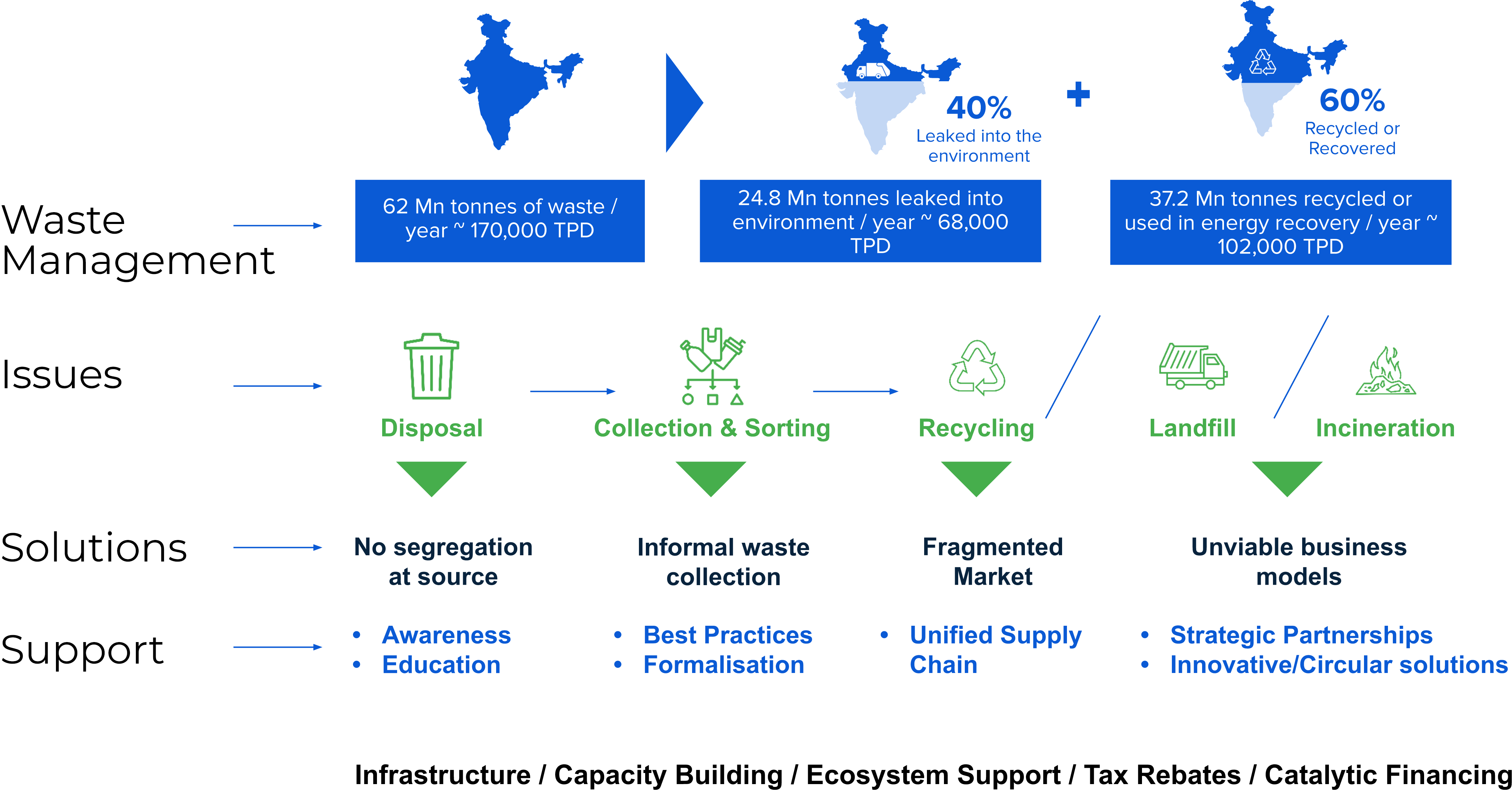
SECTION 1.2
Extended producer responsibility in India
Overview of the policy framework and current status in India
Uniform Framework for Extended Producers Responsibility (Under Plastic Waste Management Rules, 2016) offers three pathways for Producers, Importers and Brand Owners (PIBOs) to help manage / recover plastic.

Waste Management (Recovery) Models
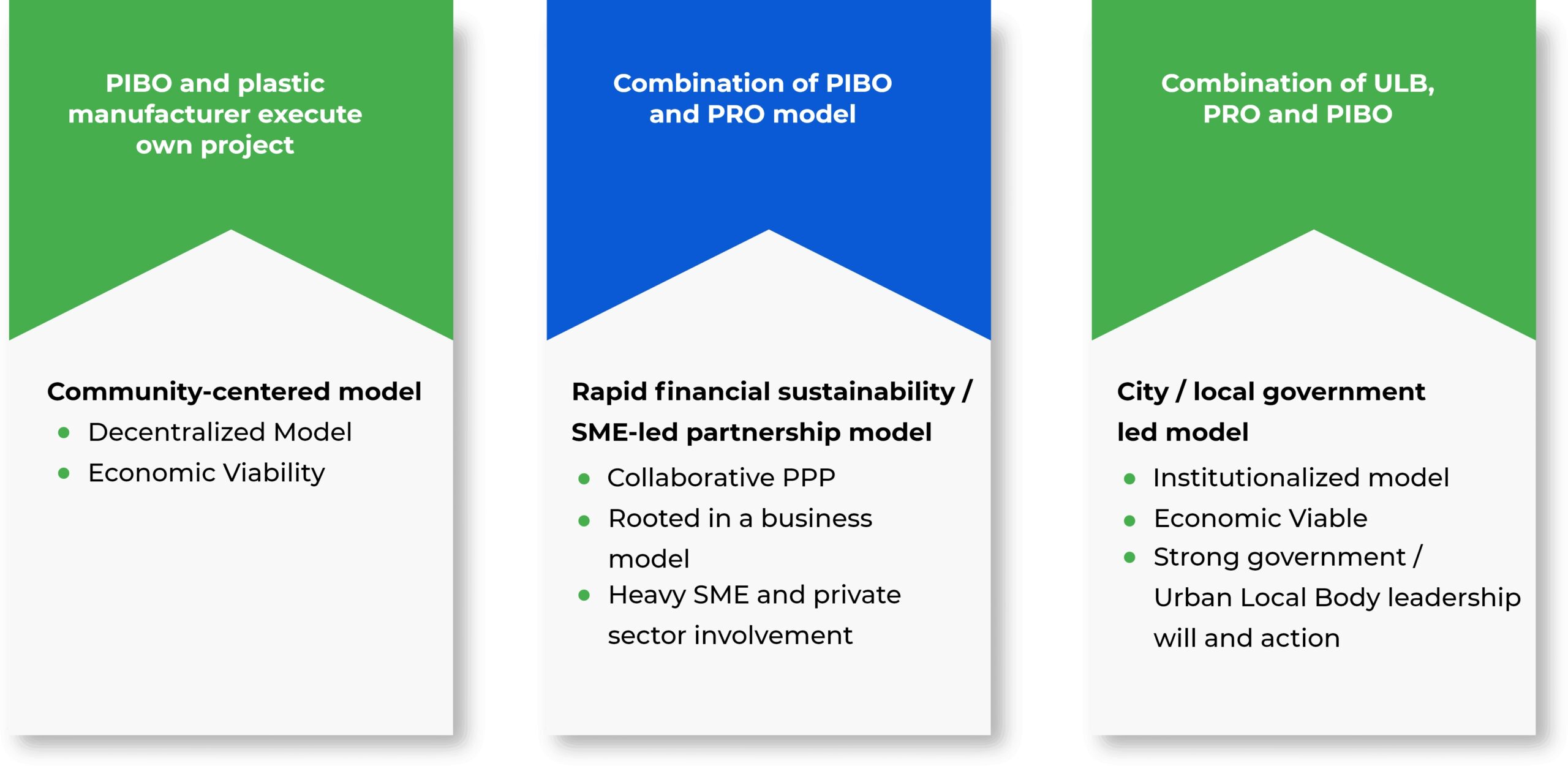
- Executing own projects is highly viable for corporate adoption to get ahead of the curve in EPR compliance through collaborations on multi-stakeholder projects.
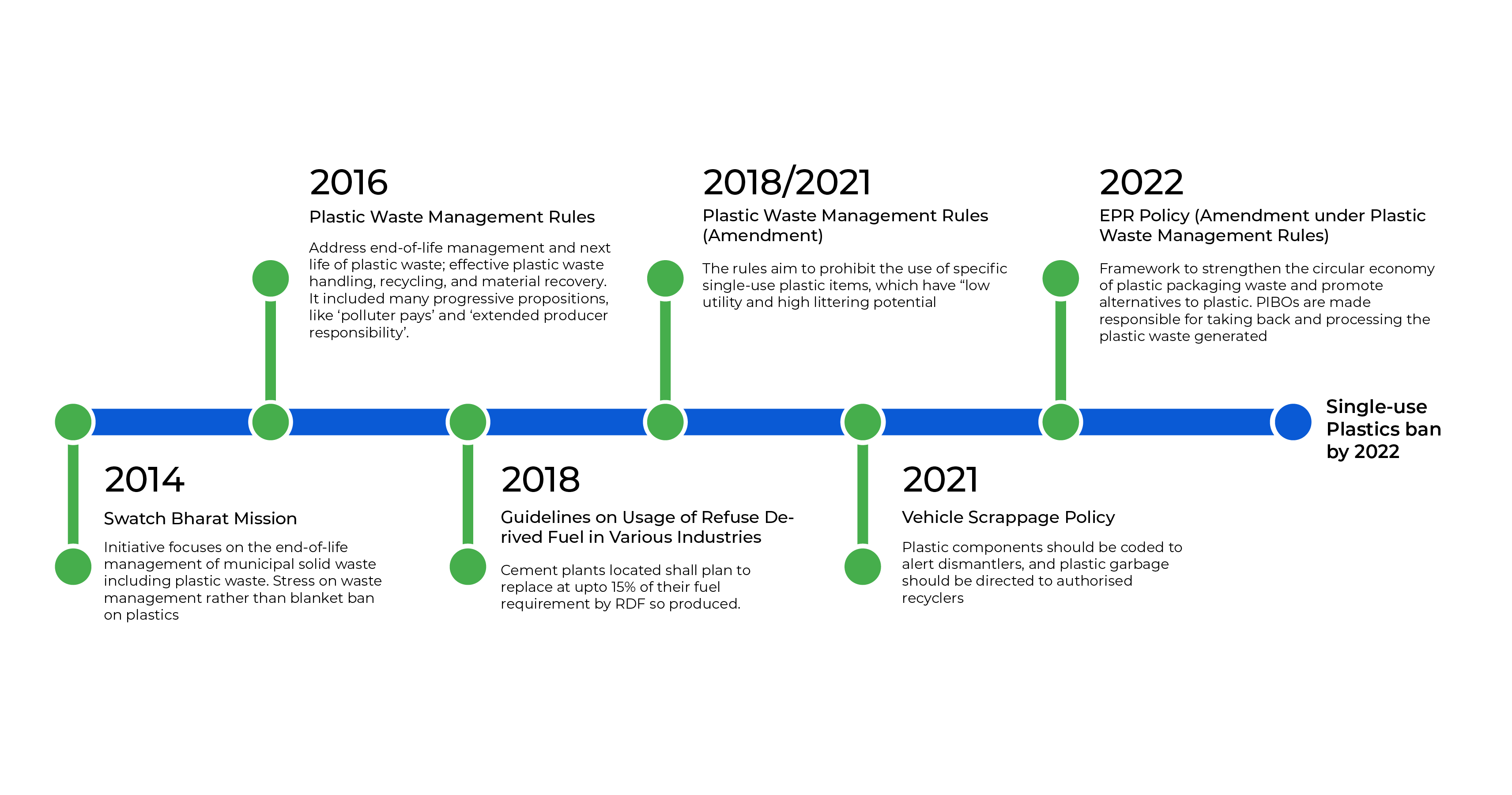
Extended producer responsibility
EPR shifts the focus of waste management costs from public to private sector
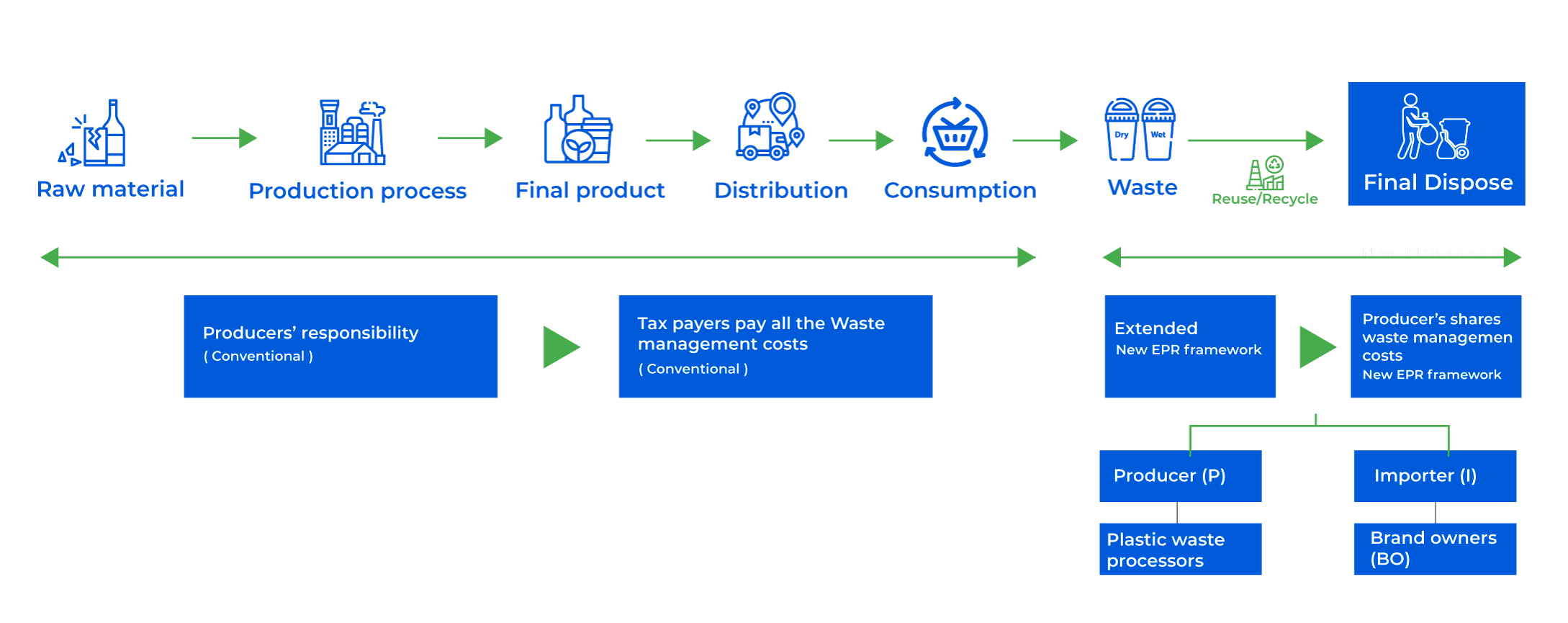
Extended producer responsibility
- Extending the responsibility of producers over the entire life cycle of the products manufactured; based on the “Polluter Pays” principle
- Internalise the environmental costs and waste management costs of products into their price
- Shift the economic burden of managing products that have reached the end of their useful life from local government and taxpayers to product producers and consumers
- Obligated Entities: the producers, importers and brand-owners (PIBOs)
-
Responsible disposal mechanisms:
Priority I: Recycling
Priority II: End life disposal (road construction, waste to energy, waste to oil, cement kilns )
EPR targets
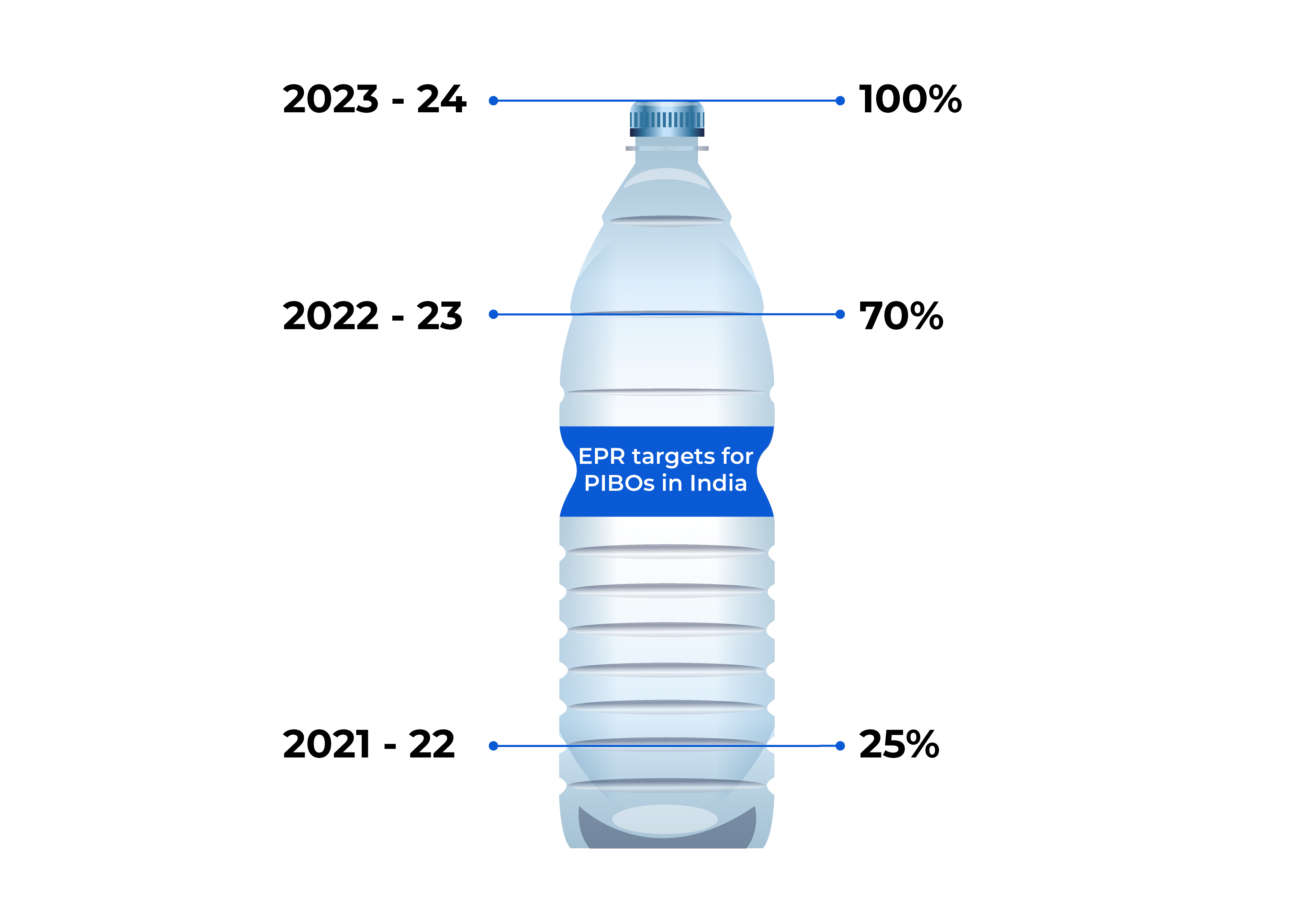
Post 2028, only 20-40% of plastic waste can go for end-of-life disposal and rest must be recycled.
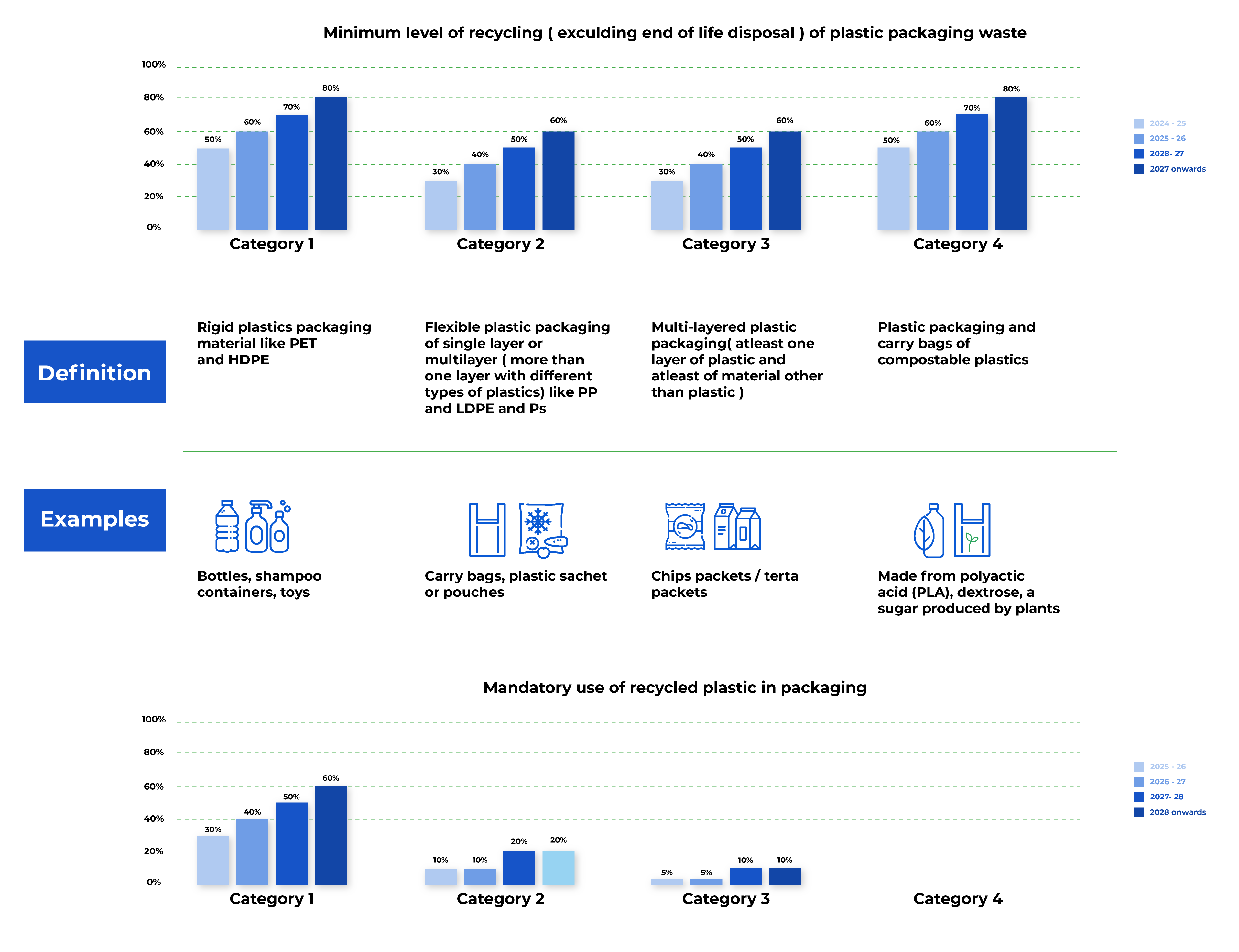
SECTION 1.3
Successful waste management (Recovery) models
Waste Recovery Models
In this section, we will study some of the successfully working models for waste management. All models work on some of the common design principles like co-operation & co-investment from ULBs, community participation, education & awareness building, and closing the loop but still each of the model has some unique key characteristics. The table below will help the user to understand the finer nuances of the various successful models.
During your site selection, there are some key factors you should look out for
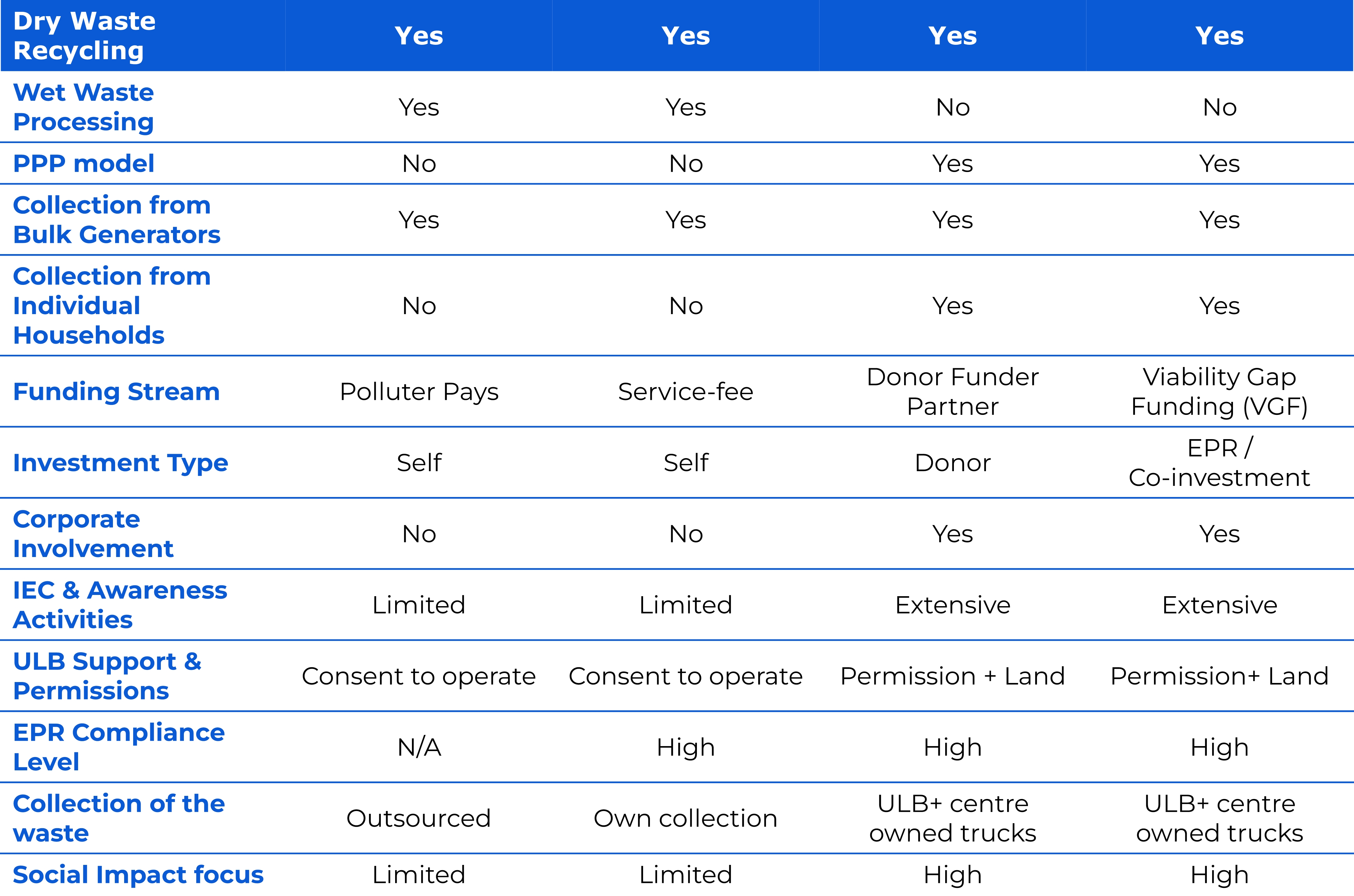
We will study some of the successful models using the values exchange tool. The Values Exchange is a tool designed to explore the different business models. The key to a sustainable business model is ensuring that all stakeholders in the ecosystem are generating and capturing value. Through this tool we would get a deeper understanding of the different successful models to effectively manage the waste problem.
Hasiru Dala Model
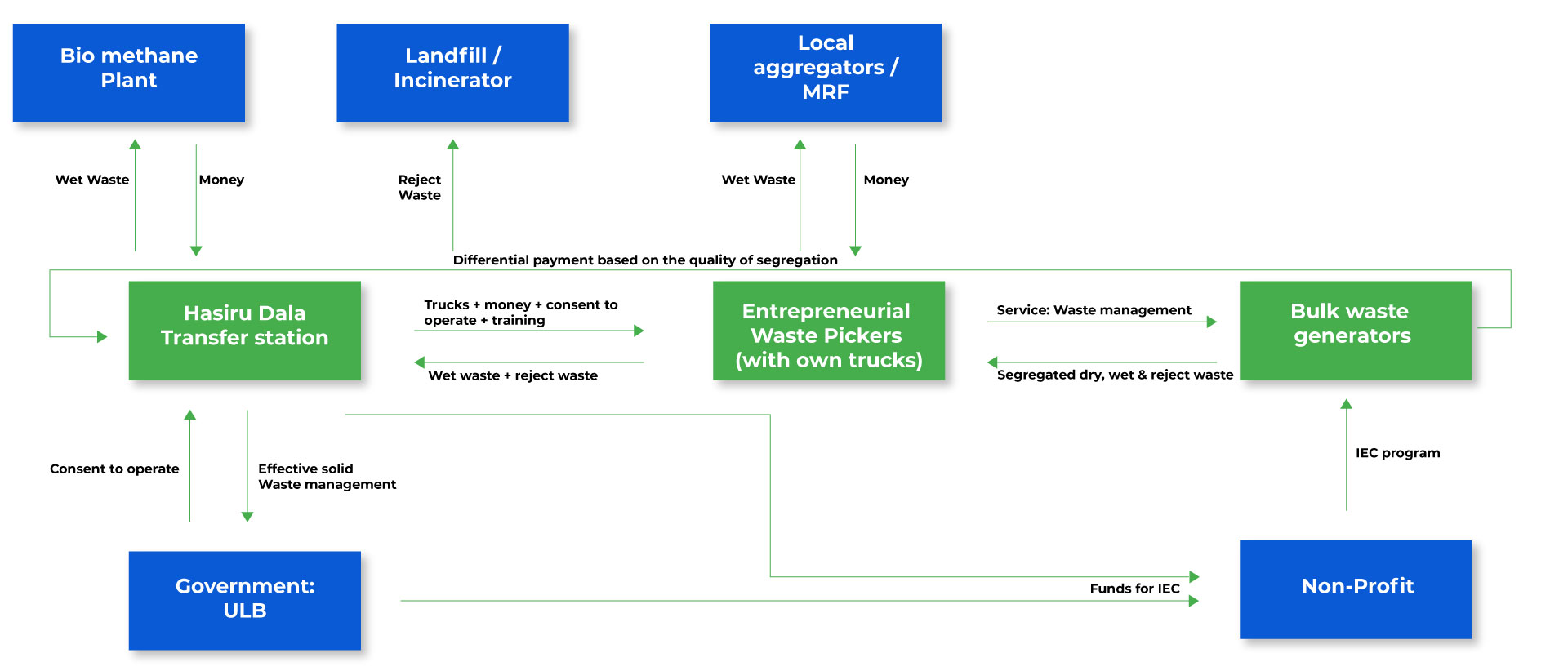
Differential payment based on the quality of segregation
- Hasiru Dala Innovations provides Total Waste Management Service and the Event Waste Management Service. The Total Waste Management service is an end-to-end, single vendor Municipal Solid Waste Management solution for corporates, apartment complexes and other bulk waste generators.
- The business model includes revenues from selling the wet waste and a service-fee that is paid by bulk generators. Hasiru Dala Innovations has an innovative payment system - the fee paid by customers has a fixed and a variable component which depends on the amount of segregation done.
- The model works with the existing waste pickers by integrating them in a formal set-up by issuing identity cards that recognizes them as waste collectors. The collected waste is transported to HDI’s Transfer Point. From there, wet waste is transferred to a bio-gas plant and dry waste is taken by waste pickers; that they eventually sell to recyclers.
Saahas Model
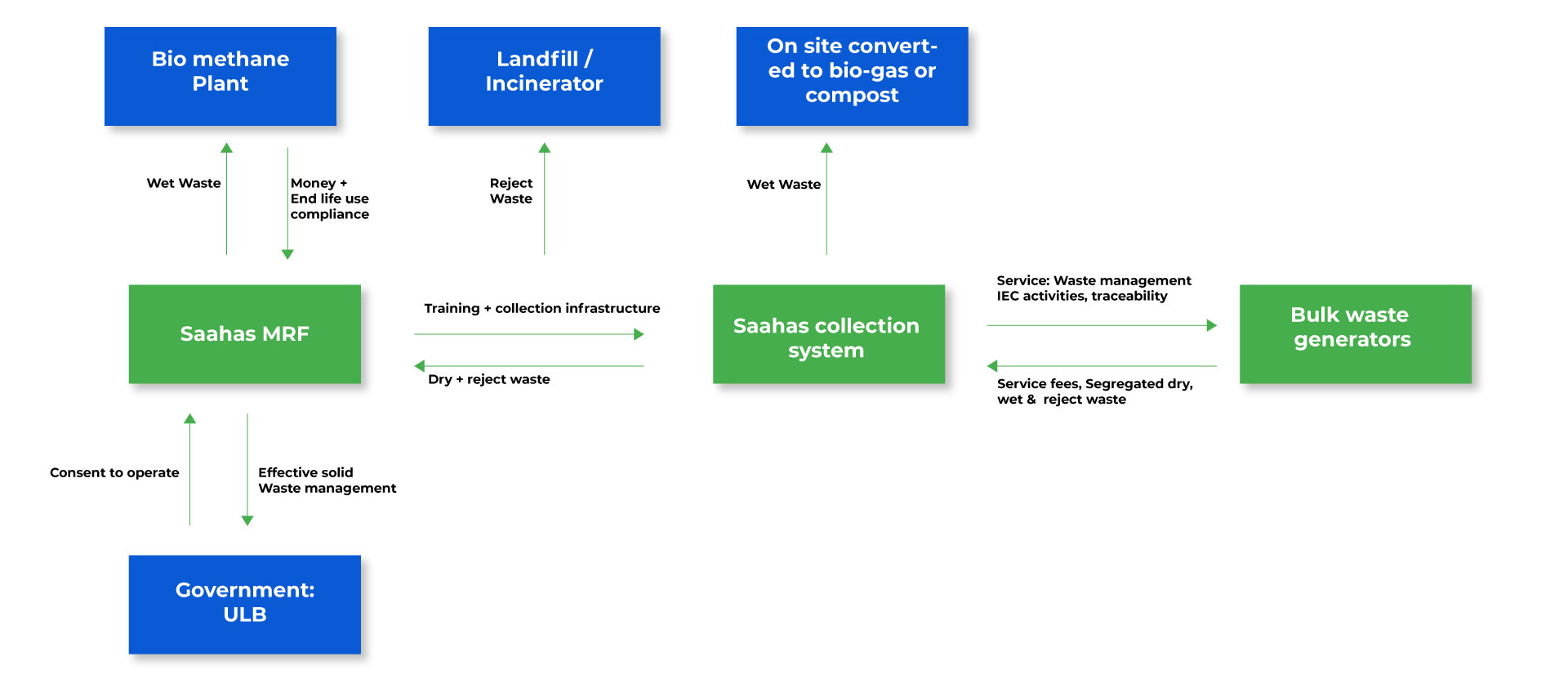
- Saahas Waste Management Pvt Ltd which provides professional services to all waste generators, including companies, apartment complexes, institutions and communities.
- The business model includes revenues from waste and revenues from a service fee paid by bulk generators. Saahas deploys its own field staff to collect the dry and wet waste.
- It is an on-site model – sorted dry waste is collected by the Saahas team and transferred to MRFs for further processing and wet waste is converted to bio-gas or compost onsite.
UNDP Model
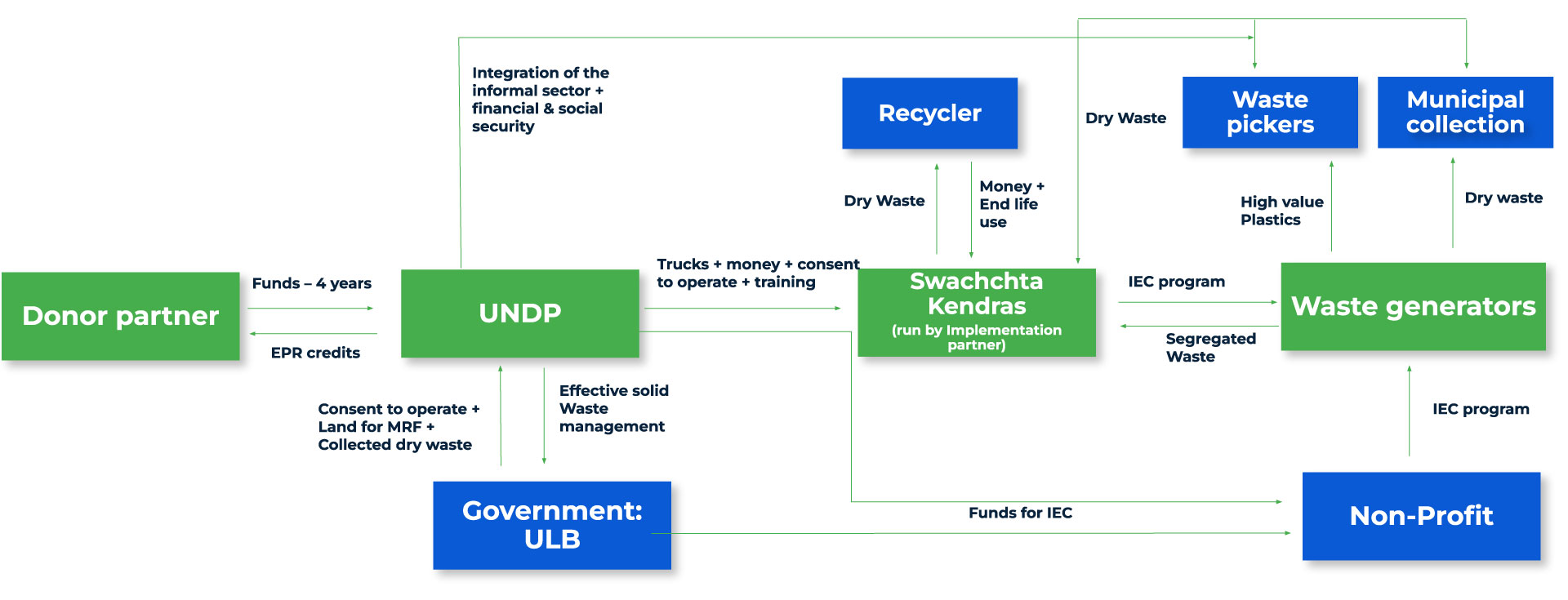
- UNDP in partnership with it’s donor funder partner (HUL) and the ULB has established a sustainable socio-technical model to mange the plastic waste effectively.
- The business model includes CAPEX and OPEX funding from a donor funder partner till the time the project becomes financially sustainable.
- The dry waste collection is done by the ULB and the implementing partner. The collected dry waste is brought to UNDP’s Swachhta Kendras (SKs) for further segregation. This segregated dry waste is then sent for recycling to appropriate recyclers. The model focuses on empowering waste pickers and moving towards a circular economy.
SECTION 1.4
Key learning & insights
- Primary or source segregation of waste is critical to the success of any waste management model. Thus, creating awareness amongst the waste generators to improve segregation at source is of utmost importance.
- Ensuring the right collection infrastructure by leveraging partnerships with government minimizes initial investment in infrastructure through provision of sorting facilities and equipment, including waste collection trucks and waste disposal equipment.
- Deployment of technology to connect various stakeholders across the value chain and improves efficiency of operations.
- Different revenue streams exist to make the solution financially sustainable, including – (i) waste collection fees from households & commercial enterprises, (ii) proceeds from the sale of segregated waste to recyclers, and (ii) EPR revenues.
- Integration of safai saathis and waste pickers forms a unified value chain, this can be done by giving fair wages, sustained livelihoods, ID cards, bank accounts, medical and life insurance.
- Incetivising the informal sector to collect soft & flexible plastics and multi-layered packaging is dependent on their end-life use by closing the loop.
